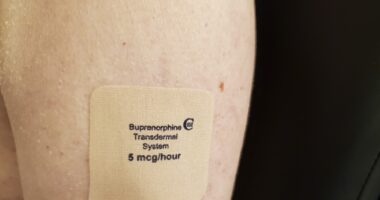1st SMA type 0 report in Latvia prompts call for prenatal detection

Researchers are calling for change in prenatal diagnostic procedures in Latvia after the first registered case of a newborn with spinal muscular atrophy (SMA) type 0 was reported in the country.
“[It] is crucial to be able to detect this disease prenatally in order to provide the best possible care for the patient and parents,” they wrote.
The case highlights potential prenatal signs and symptoms of this rare disease type, including an increase in the thickness of fetal nuchal translucency — a fluid-filled space behind the neck — and a reduction of fetal movements.
The report, “The First Registered Type 0 Spinal Muscular Atrophy Patient in Latvia: Call for Change in Prenatal Diagnostic Procedures,” was published in the journal Case Reports in Medicine.
Type 0 is rarest and most severe form of SMA
SMA is a genetic disease characterized by progressive muscle weakness and atrophy, mainly affecting motor function. It may also cause problems with speaking, swallowing, and breathing. The most common cause is a mutation in the SMN1 gene.
The five main types of SMA are based on the age of the patient when first symptoms occur. Type 0 is the rarest and most severe SMA form, and is defined by symptoms appearing before birth, usually a reduction or absence of fetal movements.
This report describes the case of a newborn boy in Latvia diagnosed with SMA type 0, the first such case registered in the country. The mother, a 33-year-old woman, and the father, a 35-year-old man, had no known health issues. The mother had previously experienced a normal pregnancy resulting in a healthy child. However, both parents are carriers of a mutated SMN1 gene.
The pregnancy was considered high risk due to maternal age, and several ultrasound parameters were assessed, including the thickness of fetal nuchal translucency, nasal bone length, and fetal heart rate. The mother’s blood was also screened for biochemical parameters. A higher measurement of fetal nuchal translucency, in comparison to babies of the same gestational age, indicates an increased risk for specific genetic disorders.
The first-trimester ultrasound revealed an increased thickness of nuchal translucency. This result, together with the mother’s age, placed the pregnancy at a higher risk for genetic diseases.
Chorionic villus sampling, a test that involves taking a sample from the placenta to detect certain genetic birth defects, excluded common chromosomal aneuploidies — an abnormal number of chromosomes in a cell.
Employment of extensive panel genetic testing using next-generation sequencing would be beneficial for the prenatal diagnosis of type 0 SMA cases.
Increased nuchal translucency thickness suggests fetal abnormalities
Increased thickness of nuchal translucency is predictive of fetal abnormalities, although “multiple studies have shown no association between an increased [nuchal translucency] thickness and the diagnosis of SMA,” the researchers wrote.
In this case study, the mother reported reduced fetal movements during the third trimester, which indicated the baby could have health problems, although only in rare cases are reduced fetal movements associated with neuromuscular disorders.
“In our case, the reduced movements suggested that the symptoms of a neuromuscular disorder were already present before birth,” the researchers wrote.
“Studies show that in cases of SMA type 0, reduced [fetal] movements are typically experienced between 30 and 36 weeks of gestation and are associated with a markedly restricted lifespan,” they added.
The baby was born at 36 weeks and one day of pregnancy by an acute caesarian section, and weighed 2.95 kg (around 6.5 pounds) and was 50 cm (around 19.7 inches). He had severe asphyxia during labor, requiring resuscitation, upper airway suctioning, and ventilation.
The newborn also had severe respiratory distress, no active movements, and muscles unresponsive to stimuli. His skin was cyanotic (blue skin due to the lack of oxygen in the blood). For ventilatory support, intubation was performed in the first minute after birth, and mechanical ventilation was used due to the worsening of his condition.
Moreover, a femur fracture, low blood sugar levels, and a heart defect were detected.
Several approaches were followed to identify the cause of the patient’s severe condition. A head MRI scan revealed ischemic brain regions associated with low oxygen levels reaching the brain.
A geneticist suspected SMA, and a genetic test revealed a mutation in the SMA1 gene. Further genetic analysis revealed the patient had zero copies of the SMN1 gene, and one copy of the SMN2 gene, confirming the diagnosis of SMA type 0.
Early diagnosis ‘would give parents time to come to terms with the situation’
Ten days after his birth, the boy’s parents were informed of his diagnosis, the limited treatment options, and his poor prognosis. The parents decided against invasive ventilation, and the patient was extubated. Rapidly, the boy’s oxygen levels and heart rate dropped, followed by cardiac arrest and death.
“Employment of extensive panel genetic testing using next-generation sequencing would be beneficial for the prenatal diagnosis of type 0 SMA cases,” the researchers wrote.
“Early recognition of the disease would give parents time to come to terms with the situation as well as provide the option of pregnancy termination,” they added.
Of note, since April 2023, SMA has been integrated into the newborn screening program in Latvia. In the U.S., newborn genetic screening for SMA is provided in some states.
Because no treatment options are currently available for infants with SMA type 0, the researchers note, early detection is essential to ensure optimal care for both the patient and the parents, which may involve offering palliative care for the patient if necessary.
The post 1st SMA type 0 report in Latvia prompts call for prenatal detection appeared first on SMA News Today.



